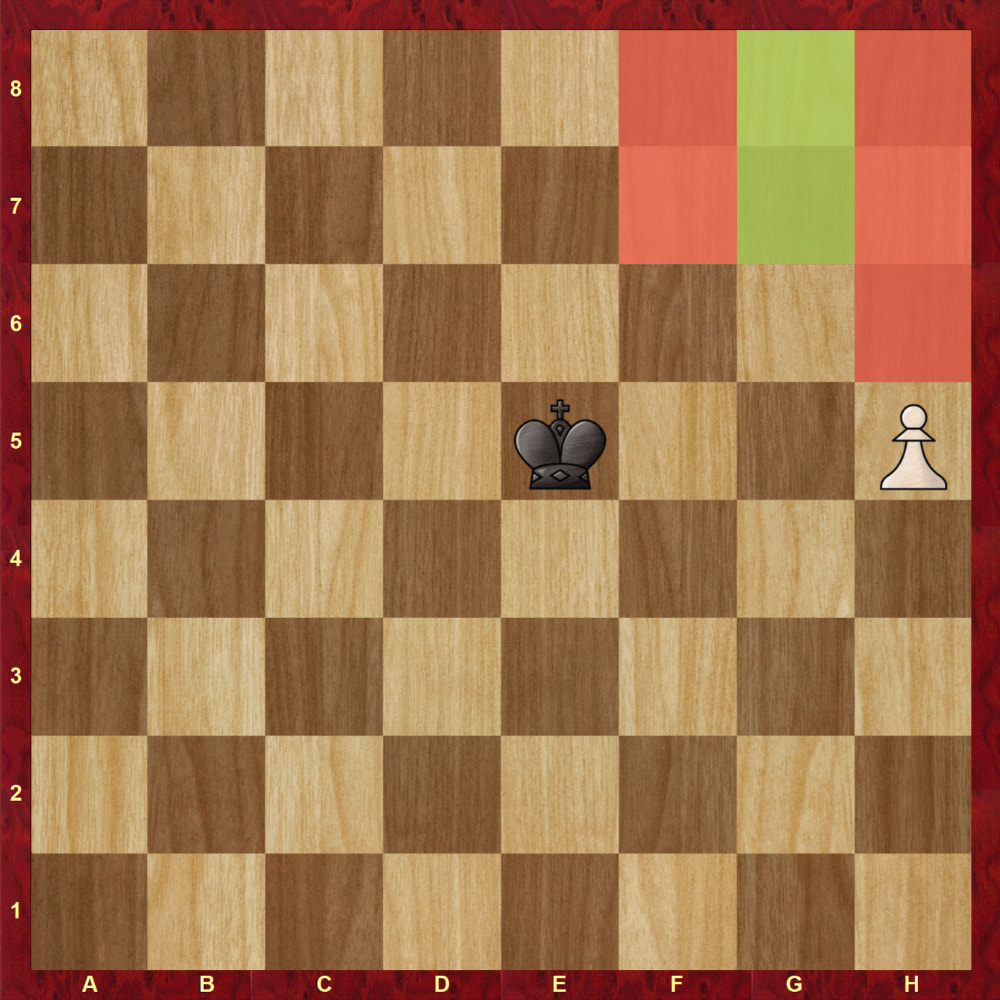
It doesn’t take long for a beginner Chess player to learn that the endgame the most difficult and most complicated to play, despite there being less pieces on the board. It’s actually because of the lack of pieces, every move that’s made with the few pieces that are on the board are extra critical to be precise. This page explains a concept that makes playing the endgame much easier. It’s the concept of key squares.
What are Key Squares in Chess?
Key squares are squares that you have to occupy with your King. If you succeed in doing so you will win the game, regardless who’s turn it is to move.
Whether you’re the player that has the pawn or just the King, being able to identify a key square is equally important. If you don’t have a pawn, knowing what squares to move your King to in order to prevent the opposing pawn to promote will save you countless losses. You’ll be able to turn a losing position into a draw because of the Pawn Square Rule.
In the position below, White wins as long as White plays Ke4.
How To Identify Key Squares in Pawn Endgames
This first example is a game between the legendary Bobby Fischer and Svetozar Gligoric. The endgame shows you how to identify the key squares in the position.
Fischer vs Gligoric
The key squares are determined by the files that the pawn is currently on. Let’s go over how to identify key squares depending on the file.
Rook Pawn Key Squares
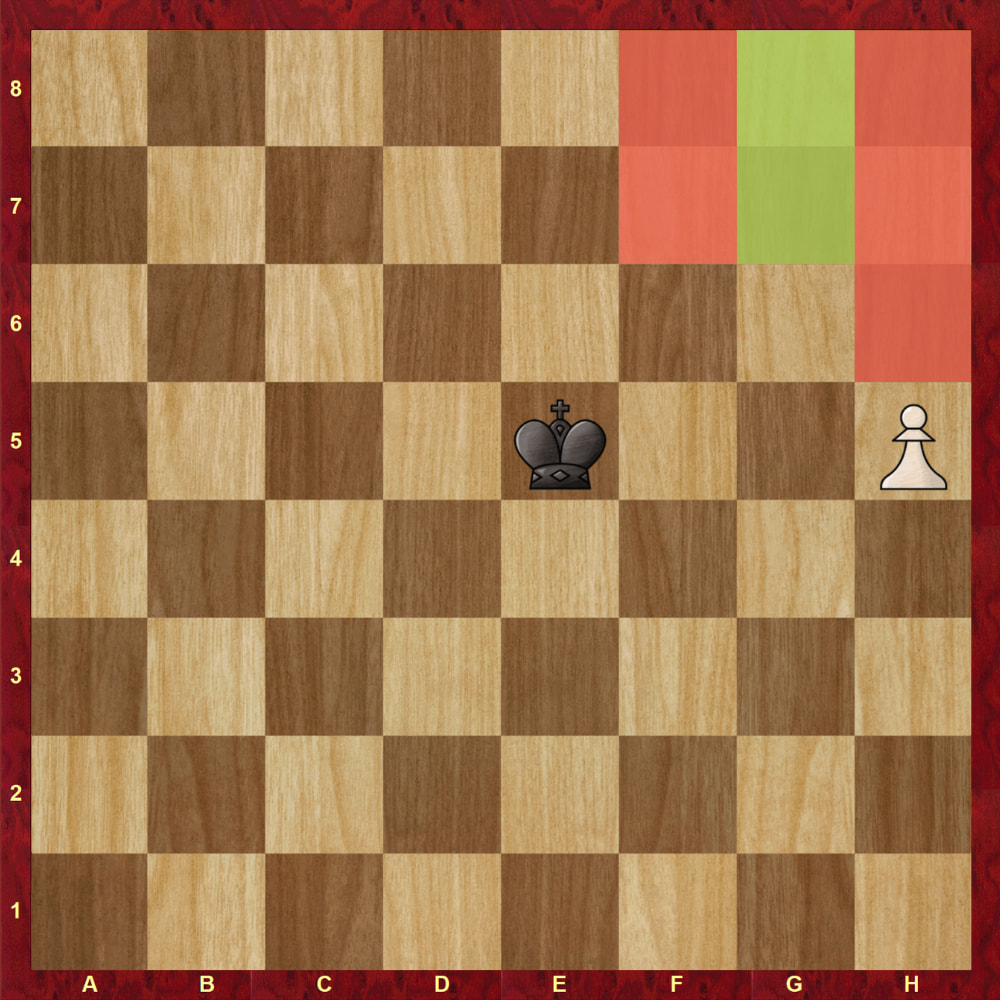
For a Rook Pawn, also known as a wing pawn, the key squares are the b7 and b8 squares or g7 and g8 for the h-pawn.
b7 is the key square for White to get the King on. With the King on that square, White is able to promote and Black can’t prevent it or capture when promoted either.
Key Squares For Pawns on the Second and Third Ranks
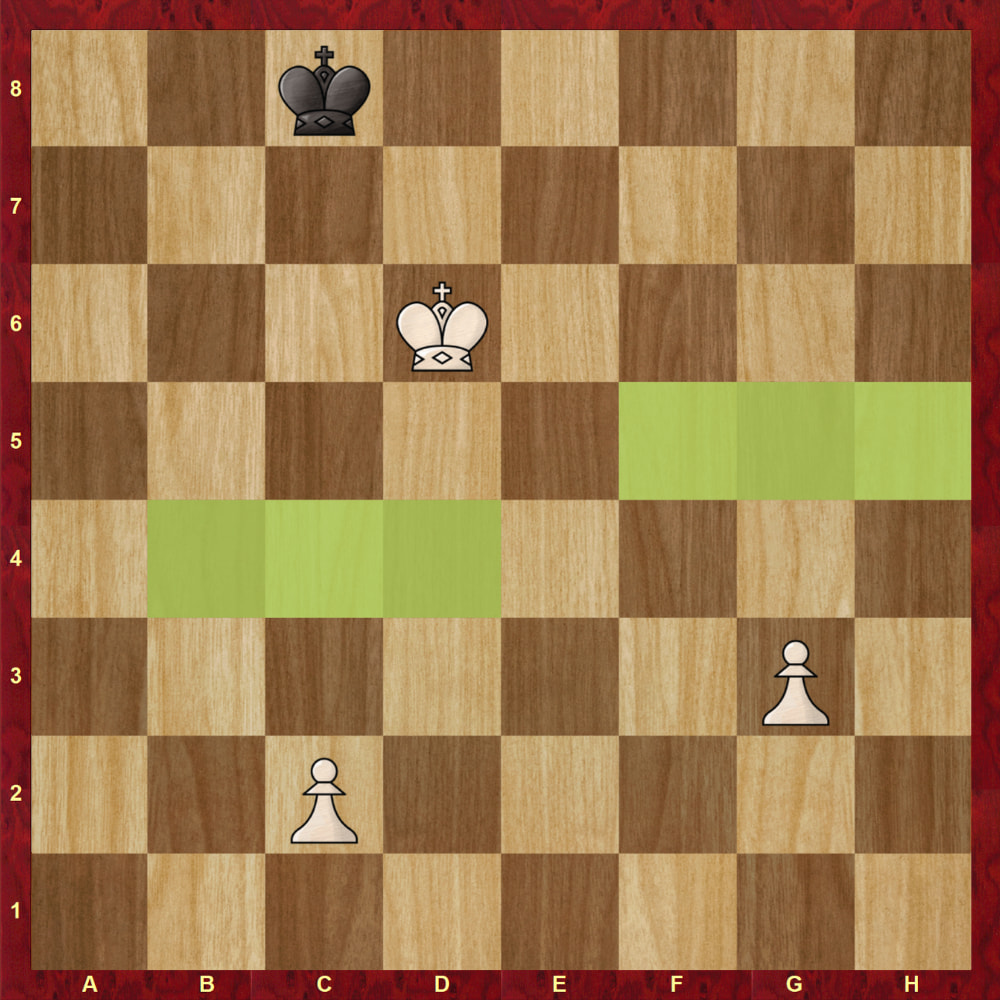
A pawn that is below the fifth rank has three key squares located two ranks in front of the pawn. This rule doesn’t apply for a Rook pawn since the pawn is on the edge of the board.
Key Squares For Pawns on the Fourth and Fifth Ranks
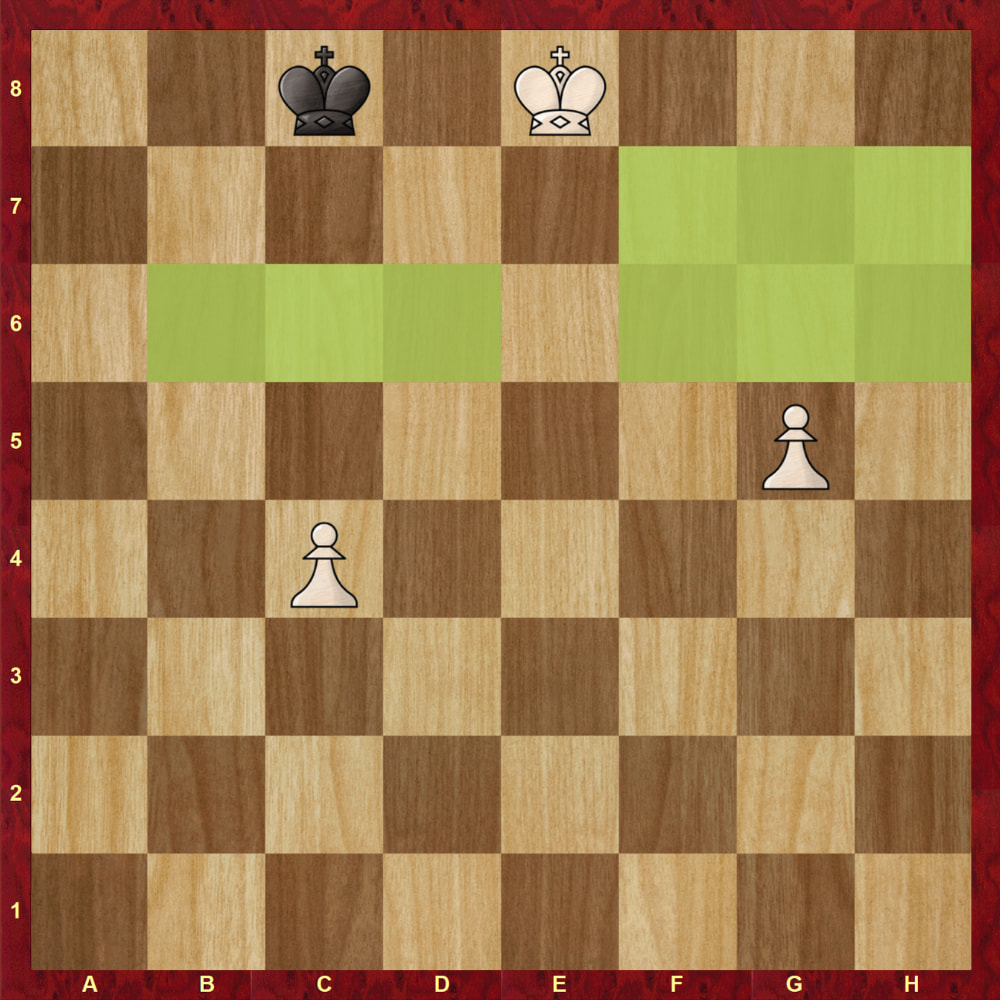
The pawn on the 4th rank or below has three key squares. If the pawn reaches the fifth rank, three more key squares are added. Which means the pawn on the 5th rank or higher has a total of six key squares.
Key Squares For Pawns on the Sixth and Seventh Ranks
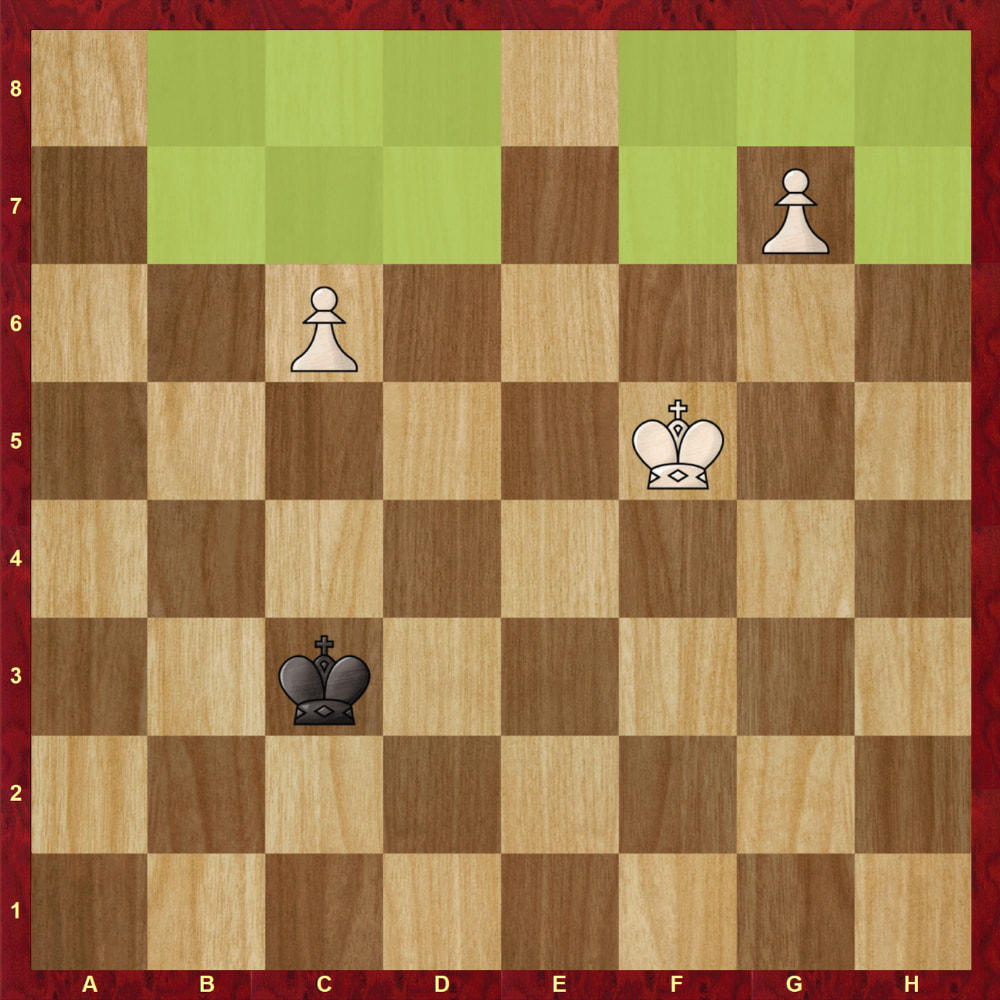
The pawn on the sixth rank has six key squares and the pawn on the seventh rank has five key squares. As long as the King is on one of those squares, the opposing King cannot prevent promotion.
Conclusion
Understanding key squares is crucial to improving your pawn endgame. If you play online on Chess.com, while you’re playing, practice highlighting the key squares whenever you get a King and Pawn endgame. After a few times, identifying every key square will become more automatic.

